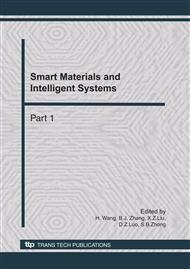p.1
p.6
p.12
p.18
p.23
p.28
p.32
Concurrency Control Protocol for Real-Time Database and the Analysis Base on Petri Net
Abstract:
In the article a new concurrency control protocol for real-time database (RTCC) is proposed. The protocol based on the traditional speculative concurrency control protocol (SCC). It dynamically establish the maximum of shadow to reasonably use the resources of system and add the quasi-commit phase to avoid many unnecessary restarting and enhance the concurrency of transaction. The theory of Petri net proof and results of experiment show that this protocol is feasible and effective , and it can meet the needs of real-time transaction. Speculative Concurrency Control is suitable especially for real-time database[1]. On the one hand, SCC is similar to PCC, to detect potentially harmful conflict as early as possible, so as to start a replacement schedule, thereby increasing the opportunities for transactions to meet time limits. On the other hand, SCC is similar to OCC, it allows the concurrency of conflict transaction and, therefore, avoids unnecessary matters that may affect the timely submission of delay. As a result, it alleviates the congestion problems and PCC restart OCC's problems, in order to better meet the transaction deadline. Based on the fact above mentioned, we propose a suitable real-time database concurrency control protocol [2,3] (RTCC: Concurrency Control protocol for Real-Time). The protocol of the SCC protocol on the traditional basis with a series of improvements can avoid a large number of unnecessary transaction restart and improve concurrency. Finally, by Petri net theory it can be proved feasible and correct.
Info:
Periodical:
Pages:
12-17
Citation:
Online since:
October 2010
Authors:
Keywords:
Price:
Сopyright:
© 2011 Trans Tech Publications Ltd. All Rights Reserved
Share:
Citation:


